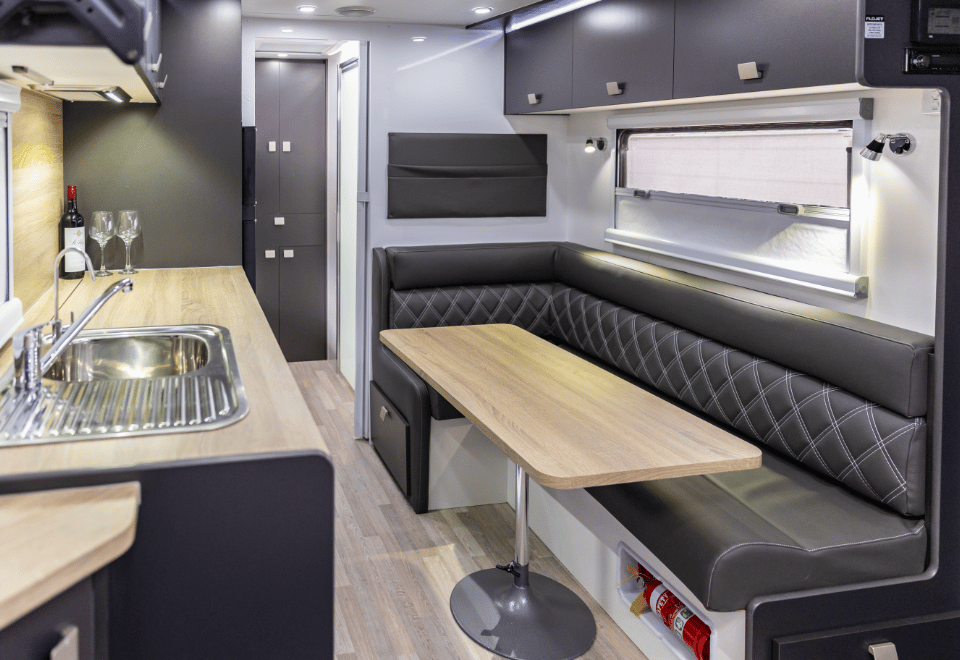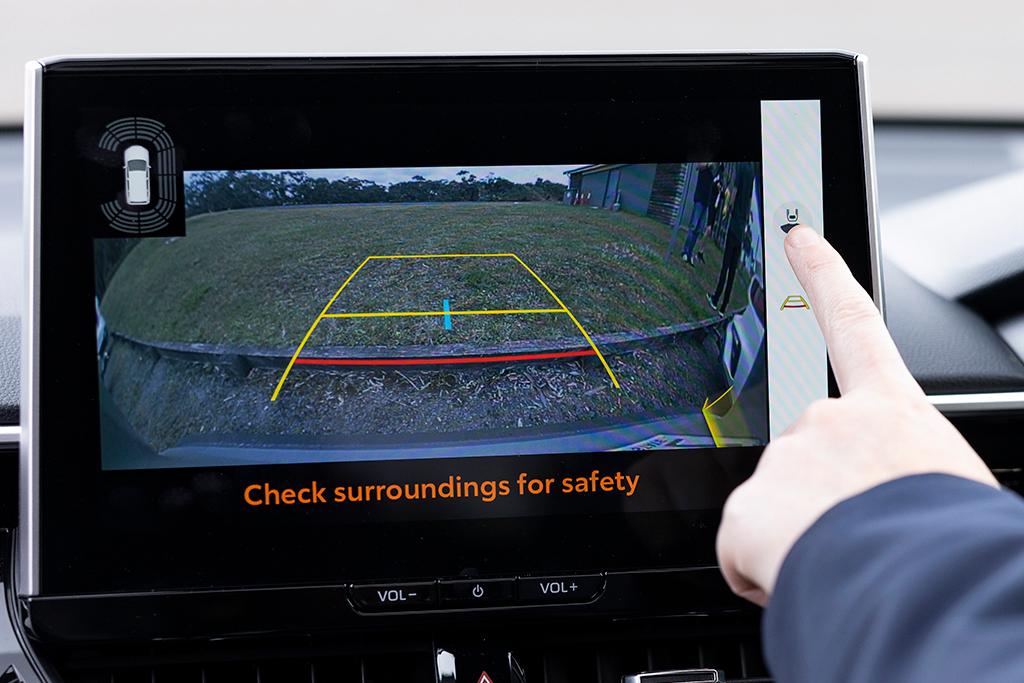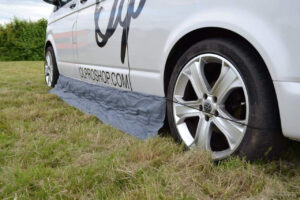Introduction
Brief about the Importance of a Rear-View Camera in a Caravan
Installing a rear-view camera in a caravan is not just a modern convenience but a pivotal safety measure. The caravan, due to its size and structure, has significant blind spots that can make reversing or simply checking the environment behind the vehicle a challenging task. A rear-view camera mitigates these challenges by providing a clear view of the space behind the caravan, thereby reducing the risk of accidents and enhancing the driver’s confidence while maneuvering.
Safety and Convenience Aspects
The safety provided by a rear-view camera extends not only to the driver but also to pedestrians and objects in the vicinity. It helps in avoiding accidental back-overs and ensures safe parking. On the convenience front, it aids in effortless hitching of the caravan to the vehicle and makes reversing into tight spots or navigating through narrow paths much simpler. The convenience and safety aspects together make a rear-view camera an indispensable accessory for caravans.
Choosing the Right Rear View Camera
Types of Rear-View Cameras Suitable for Caravans
There are various types of rear-view cameras available in the market, each with its unique features and specifications. Some are wired, providing a stable connection, while others are wireless, offering easier installation. Additionally, cameras differ in their viewing angles, resolution, and additional features like night vision. Selecting the right type involves considering the caravan’s size, the driver’s preferences, and the typical driving conditions.
Key Features to Look for
When selecting a rear-view camera, it’s crucial to consider features like night vision capability, which ensures clear visibility under low light conditions. The choice between wired and wireless setups will influence the installation process and reliability of the system. Additionally, considering the camera angle is vital to ensure that it provides a comprehensive view, covering all blind spots effectively. Durability and resistance to weather conditions are also paramount to ensure longevity and consistent performance.

Tools and Materials Needed
List of All Tools and Materials Required for the Installation
Installing a rear-view camera requires various tools and materials, such as a drill, screws, wiring, and possibly soldering equipment, depending on the type of camera chosen. It’s imperative to have a comprehensive list before beginning the installation to ensure a smooth and uninterrupted process. This list might include mounting brackets, power cables, video cables, and any additional accessories provided with the camera kit.
Safety Gear and Precautions
Safety should be paramount during installation. Utilizing safety gear like gloves and goggles is crucial to protect oneself during the drilling and wiring process. Additionally, ensuring that the caravan is stable and secure before beginning the installation is vital to prevent any accidents. It’s also advisable to disconnect the caravan’s power supply during installation to avoid any electrical mishaps.

Installation Process
Step-by-Step Guide on Installing the Rear-View Camera
The installation process involves several key steps, starting with deciding the mounting location for the camera and monitor. Following this, the camera and monitor need to be securely mounted using the provided brackets or mounts. The next step involves routing the wiring from the camera to the monitor, ensuring it is securely fastened and protected from potential damage. Finally, the system needs to be connected to a power source, ensuring all connections are secure and insulated.
Wiring and Connecting to the Power Source
Wiring is a critical aspect of the installation process, especially in ensuring a stable and reliable connection between the camera and monitor. The wires should be routed in a manner that protects them from potential damage and doesn’t interfere with any moving parts of the caravan. Connecting to the power source requires careful attention to ensure that the connections are secure and that the system receives a stable power supply, avoiding any potential electrical issues.

Calibration and Testing
Ensuring the Camera Angle is Correct
Once the installation is complete, calibrating the camera to ensure it provides the optimal view is crucial. The camera angle should be adjusted to eliminate all blind spots and provide a comprehensive view of the area behind the caravan. It’s advisable to have a second person assist with this step, guiding the adjustments while observing the monitor to ensure the view is clear and comprehensive.
Testing the System to Ensure It’s Working Properly
After the camera is calibrated, a thorough testing of the system is imperative to ensure all components are working harmoniously. This involves checking the clarity of the display, ensuring there is no lag or interference in the transmission, and verifying that the system activates reliably when the vehicle is in reverse. It’s also advisable to check the system under various lighting conditions to ensure the night vision and brightness adjustments are functioning effectively.
Troubleshooting Common Issues
Addressing Common Problems and Solutions During/After Installation
After the installation of a rear-view camera in a caravan, users might encounter a few common issues such as a blurry camera feed, no signal to the monitor, or intermittent power issues. Addressing these problems promptly and accurately is crucial to maintain the functionality and reliability of the system. For instance, a blurry camera feed might be due to dirt on the lens or an issue with the wiring, while power issues might stem from a loose connection or a problem with the power source.
Maintenance Tips to Ensure Longevity
Maintaining the rear-view camera system is pivotal to ensure its longevity and optimal functionality. Regular checks on the wiring, ensuring the lens is clean, and verifying the stability of the mounting brackets are all essential steps in maintenance. Additionally, periodic testing of the system, especially after long periods of disuse, such as after winter storage, ensures that any issues are identified and addressed promptly, maintaining the system’s reliability.

Legal and Ethical Considerations
Adhering to Road Safety and Legal Requirements
When installing and utilizing a rear-view camera in a caravan, it’s imperative to adhere to all road safety and legal requirements. Different regions may have specific regulations regarding the use of cameras and monitors within vehicles, and ensuring compliance with these laws is crucial. This might involve ensuring the monitor does not obstruct the driver’s view and that the system does not distract the driver while the vehicle is in motion.
Ensuring the Setup Doesn’t Violate Any Local Laws
In addition to general road safety and legal requirements, it’s also vital to ensure that the specific setup of the rear-view camera does not violate any local laws or regulations. This might involve restrictions on the size or placement of the monitor, limitations on when the system can be active, or requirements regarding the field of view of the camera. Ensuring full compliance with all relevant laws and regulations is crucial to avoid any legal complications.
Conclusion
Summarizing Key Points
Concluding the article, it’s essential to summarize the key points discussed, providing a quick recap and highlighting the most critical aspects of choosing, installing, and maintaining a rear-view camera in a caravan. This provides readers with a quick reference and reinforces the essential information, ensuring that the primary takeaways of the article are clear and memorable.
Additional Tips and Advice for Optimal Usage
In the conclusion, providing additional tips and advice for optimal usage of the rear-view camera system can add value for the readers. This might involve advice on driving techniques with the camera, additional accessories that can enhance the system, or recommendations for dealing with common issues. Providing this additional information ensures that readers are well-equipped to utilize their rear-view camera system effectively and safely.
FAQs
Addressing Common Questions and Concerns Regarding Rear-View Camera Installation in a Caravan
An FAQ section can address common questions and concerns that users might have regarding the installation and use of a rear-view camera in a caravan. This might involve questions about choosing the right camera, dealing with common issues, or understanding the legal requirements. Addressing these questions in a clear and concise manner provides valuable information and helps to alleviate any concerns or uncertainties that readers might have.
Providing Detailed Answers and Additional Resources
In addition to addressing the questions, providing detailed answers and pointing readers towards additional resources where they can find more information is crucial. This might involve providing links to product websites, forums, or instructional videos that can provide further assistance. Ensuring that the answers are comprehensive and that readers have access to all the information they need is vital to make the FAQ section truly valuable and helpful.



